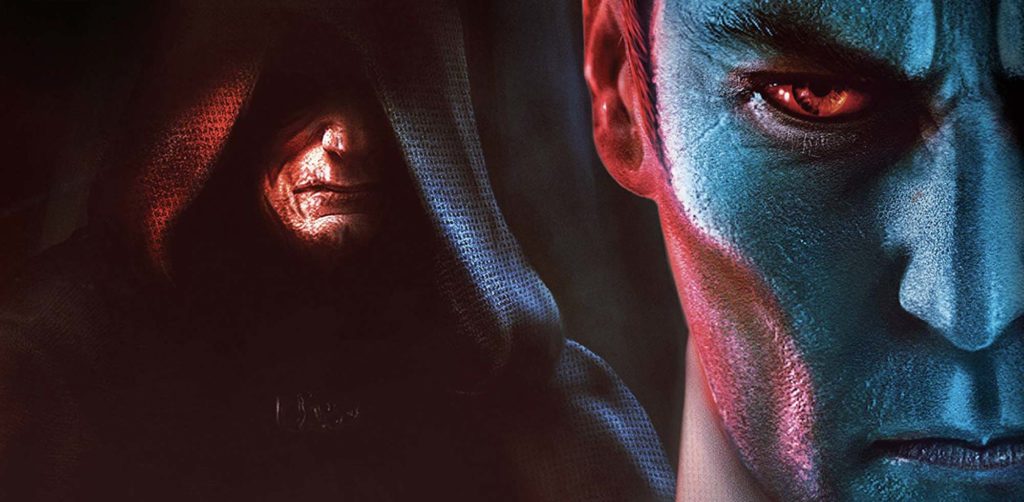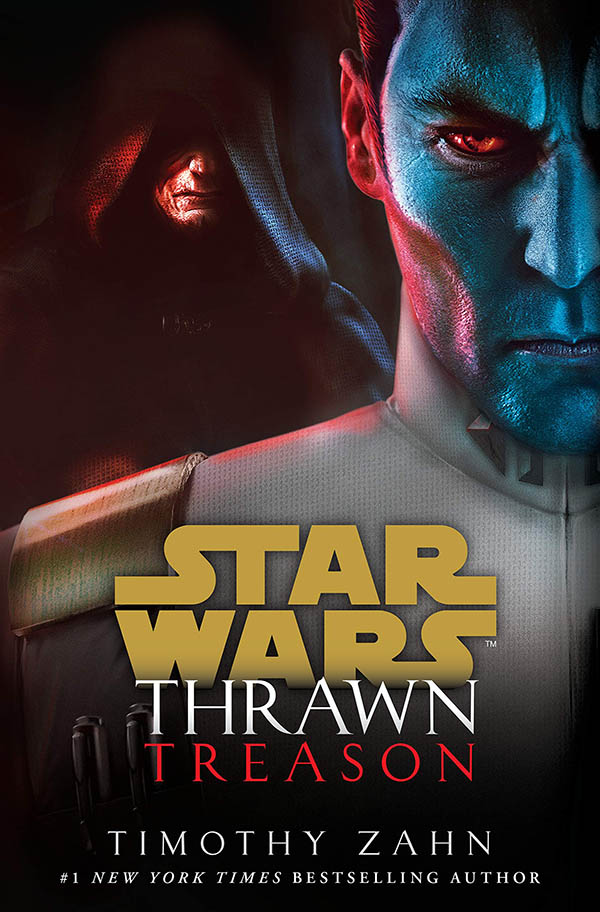
WARNING: Spoilers ahead!
No one writes Star Wars quite like 2018 Supa-Star author Timothy Zahn; after all, he was the man originally responsible for picking up the threads of the Star Wars universe and writing the first-ever, and many would say still the best, trilogy of books post-Return of the Jedi in the original Star Wars expanded universe.
More recently, however, following Disney’s massive reworking of the Star Wars canon which saw the demotion of over 380 Star Wars titles to non-canonical Legends status, he was also the first to resurrect one of the most important and universally beloved EU villains, Grand Admiral Thrawn, in a new trilogy of books that now sits as official Star Wars canon in the new continuity.
At the end of July, Zahn released the third and final instalment in his Thrawn trilogy, Thrawn: Treason, which follows on from the events of 2017’s Thrawn and 2018’s Thrawn: Alliances. With the book’s timeline set midway through the events of Star Wars: Rebels season four, and prior to the events of Rogue One and A New Hope, Zahn continues to stitch together the various eras and characters of the Star Wars universe with the practiced hand of a true master.
In the first two books in Zahn’s trilogy, we saw him begin to weave the threads of the animated Star Wars: Rebels series (which was Thrawn’s first official appearance both on-screen and in the new continuity) together with the threads of both the original and prequel trilogies.
In Thrawn: Alliances, readers were treated to an intriguing contrast, as the tale swapped between a past encounter Thrawn had with the Jedi Anakin Skywalker and an unlikely team-up with the freshly minted Sith Lord, Darth Vader. Of course, with Thrawn in possession of the type of cognitive faculties that would make Sherlock Holmes appear dim-witted, he was more than capable of piecing two and two together and deducing Vader’s true identity in short order. In this latest book, Thrawn is put face-to-face, with a far less intimidating, though still dangerous, character, Rogue One’s ambitious and scheming Director Krennic.
Treason begins with the Chiss Grand Admiral being summoned away from dealing with the Jedi Kanan Jarrus and his troublesome rebel cell on the world of Lothal, only to find himself thrown into the middle of the ongoing power-play between Grand Moff Tarkin and Director Krennic. The resources being demanded by Krennic’s ultra-secret Stardust project, which we all know to be the construction of the first Death Star, are threatening the funding allocated to Thrawn’s own special TIE fighter project, the design and production of thoroughly impressive TIE Defenders.
 Thrawn knows, quite rightly it would seem through the benefit of hindsight, that the key to maintaining Imperial control of the galaxy rests not in building a single and cumbersome super-weapon, but in equipping the Imperial Navy with quickly deployable and nigh undefeatable fleet of single-man star fighters. If only the Emperor had actually listened to his Chiss Grand Admiral more closely, that pesky Rebel Alliance probably would have fallen long before they ever needed to team up with a bunch of killer teddy bears on the forest moon of Endor.
Thrawn knows, quite rightly it would seem through the benefit of hindsight, that the key to maintaining Imperial control of the galaxy rests not in building a single and cumbersome super-weapon, but in equipping the Imperial Navy with quickly deployable and nigh undefeatable fleet of single-man star fighters. If only the Emperor had actually listened to his Chiss Grand Admiral more closely, that pesky Rebel Alliance probably would have fallen long before they ever needed to team up with a bunch of killer teddy bears on the forest moon of Endor.
The only way Thrawn can salvage his own funding is to assist Krennic in resolving what at first appears to be a relatively innocuous supply issue being caused to a main supply depot for the Stardust project. What Thrawn uncovers, however, is a much larger threat, one which will see his own loyalty to the Empire come into competition with the loyalty he has to his own people, the Chiss Ascendancy. What follows is a masterfully crafted tale, one so well written that you can almost hear the John Williams score playing beneath it, and his prose flows so easily you’d swear you were watching the events unfold on the big screen.
As always, the real strength in Zahn’s trilogy is the utterly fascinating character of Grand Admiral Thrawn, the only non-human to ever rise to the highest possible rank in the Imperial military chain of command. Blessed with an unprecedented level of tactical genius and deductive reasoning, which we learn even far surpasses that which is shared by his naturally astute race, it’s a genuine pleasure watching the machinations of his astounding mind at work, as those around him all seemingly continue to underestimate his sheer brilliance.
Like the previous two books in the trilogy, Zahn continues to expand on the mysterious threat offered by the Chiss Ascendancy’s main enemy, the Grysks. A warlike and nomadic species that has assumed control of much of the Unknown Regions, the Grysks, it would seem, have begun to impede on Imperial space and are even so bold as to have begun raiding resources intended for the Death Star. Whilst Thrawn is successful in curbing the current threat offered by the Grysks in this book, by the novel’s conclusion they are by no means eliminated entirely, and the Emperor himself finally begins to comprehend the extent of the threat that looms further out in the unknown regions of the galaxy. The possible threads for future Star Wars storylines, and even possible influences even on the events of Rise of Skywalker, are just far too delicious to ignore.
Fans of Rebels will know that Thrawn’s whereabouts throughout the original and sequel trilogy are largely unknown, having been taken into hyperspace with Jedi-hopeful Ezra Bridger in the final episode of the animated series (which occurs not too long after the events of this book), so it’s still very likely we will see Thrawn pop up again at a later point in the new continuity, and no doubt the Grysk threat will be at the heart of it when he does.
All told, Zahn has finished off his Thrawn trilogy with a strong and memorable addition to the new canon, and there is little better than watching one of Star Wars’ most memorable characters do what he does best. Now we just have to cross our fingers and wait to see when and how our favourite Chiss Admiral will return from wherever it was he and Ezra disappeared to at the end of Star Wars: Rebels.









